Capacity of enzymes to break peptide bonds in feed protein a predictor of protein digestibility
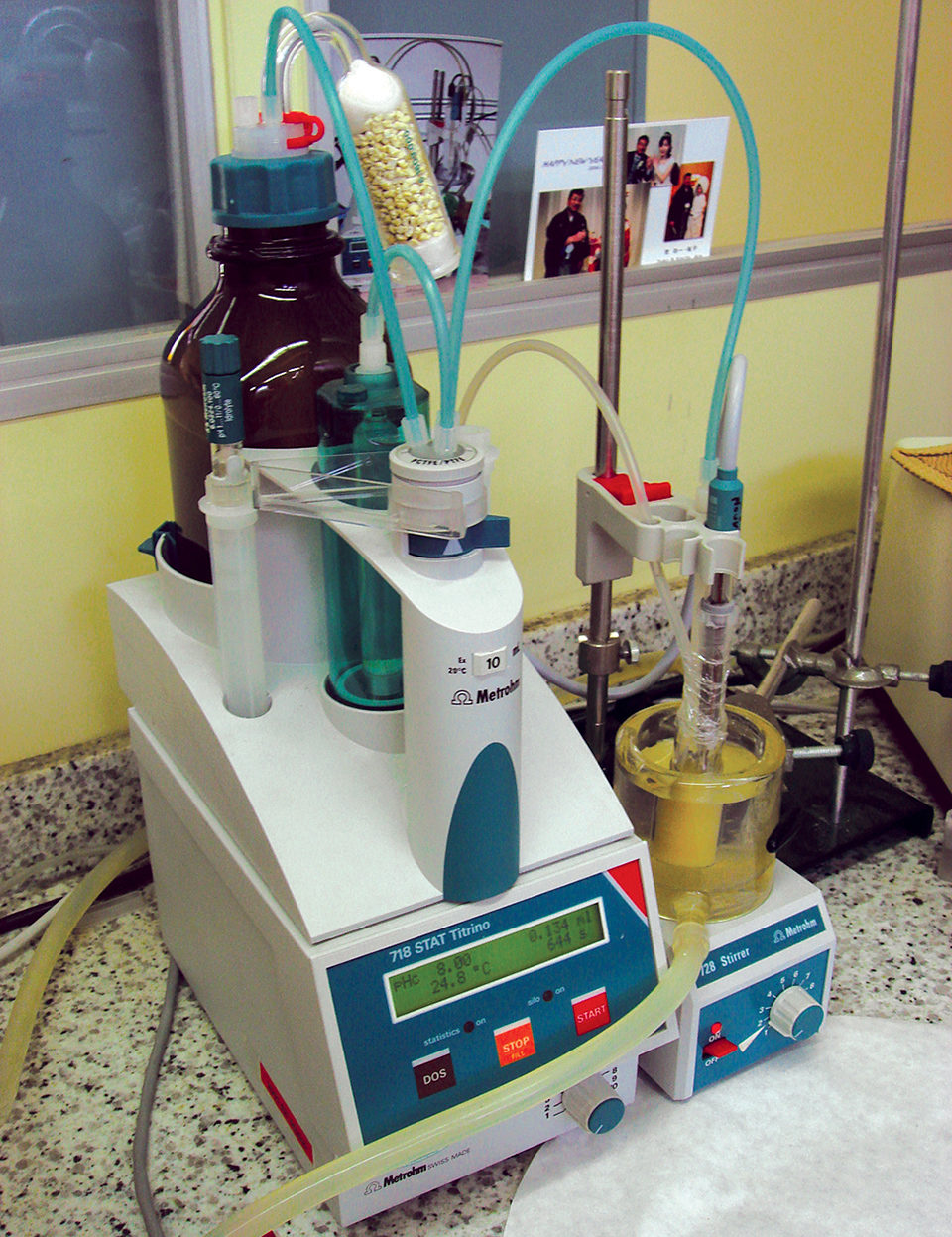
Aquafeed manufacturers are facing current and predicted near-future shifts in the availability and pricing of feed ingredients, mostly associated with shortages of natural resources and increased biofuel production. Accordingly, flexible, nutritious, and cost-effective diet formulations based on accurate analysis of the digestibility of essential nutrients, as well as possible effects of antinutritional factors, are required. In addition, innovative diet compositions and the use of unconventional ingredients may achieve further advances in feed stability and attractiveness.
The sustainable use of protein sources includes consistent monitoring of ingredients in order to manage potential variations in nutrient composition for precise feed formulation. In addition, variations in nutrient availability related to the type and homogeneity of protein sources, as well as processing strategy, can be expected.
Digestive capacity
The presence and availability of amino acids are key quality factors for feed protein. The potential for dietary amino acids to provide nutrition and support growth depends on adequate feed processing by the external and internal systems of the shrimp with essential size reduction of the protein polypeptide arrangements by digestive enzymes. Nutrient availability corresponds to the efficiency of nutrient incorporation after processing by feeding and digestive systems. Digestive capacity is an essential link to the nutritional potential of feed protein sources that can be correlated to both nutrient composition and availability.
Shrimp digestive capacity can be assessed in vitro by determining the degree of protein hydrolysis (DH percent) through a specific pH-stat method using enzymes of the target species. Standardized enzyme extracts recovered from shrimp hepatopancreas tissue can be assayed with ingredients or finished feeds and the DH percent monitored over time. The pH-stat method has been consistently used in the assessment of protein quality in ingredients and finished feeds by the feed industry.
Predicting protein digestibility
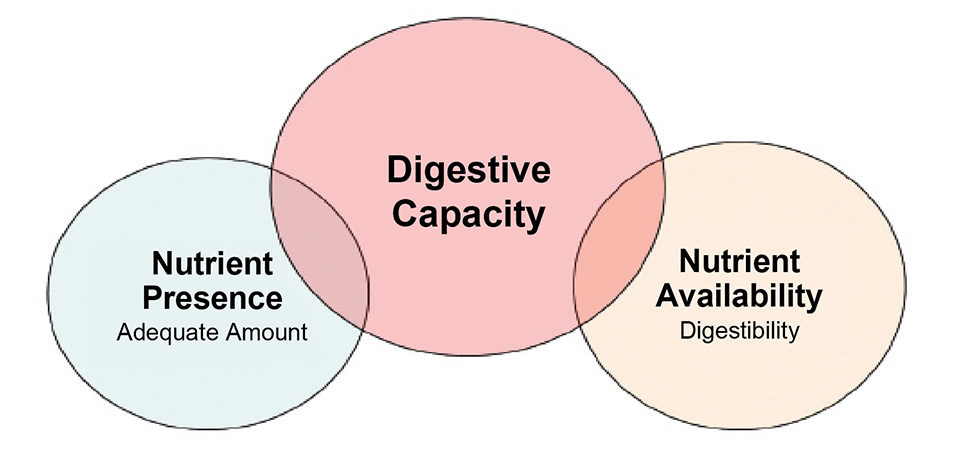
If nutrient assimilation involves effective processing by digestive enzymes, a correlation between apparent digestibility and digestive capacity would be expected. The concept of simulating shrimp digestion through determination of the extent of protein hydrolysis has been confirmed by trials with Pacific white shrimp (Litopenaeus vannamei).
The precise capacity of species enzymes to break peptide bonds in feed protein proved to be a predictor of protein digestibility. Significant correlations between in vivo apparent crude protein digestibility (ACPD) and in vitro DH percent with shrimp enzymes were found for fishmeal ingredients as well as experimental diets.
Recent preliminary results indicated that over a wide range of animal and plant ingredients, the relationship between ACPD and DH percent may exhibit a logarithmic fit. Ingredients of ACPD above 80 percent were more precisely discriminated by in vitro DH percent with enzymes. Accordingly, increased nutrient assimilation levels of certain ingredients would depend to a larger extent on more effective enzymatic digestion.
Further refining of reaction details as well as a wider analysis of ingredients would provide a better understanding of this method’s potential for shrimp nutrition. Assessment of the importance of shrimp digestive capacity in the relationship between nutrient presence and availability could further assist the evaluation of protein quality in ingredients and finished feeds.
Feed composition appeared to affect shrimp digestion efficiency. Levels of certain indispensable amino acids in six commercial feeds were found to be correlated to DH percent of L. vannamei enzymes as previously reported for (P. monodon). Significant positive correlation was verified between DH percent and methionine and methionine plus cystine levels (r2 = 0.67 – 0.92). On the other hand, a negative correlation was found between DH percent and total indispensable amino acid deficit index (r2 = -0.70). This could be further related to dietary requirements of key individual amino acids (Fox et al., 2007) as well as their availability, although it still remains to be confirmed.
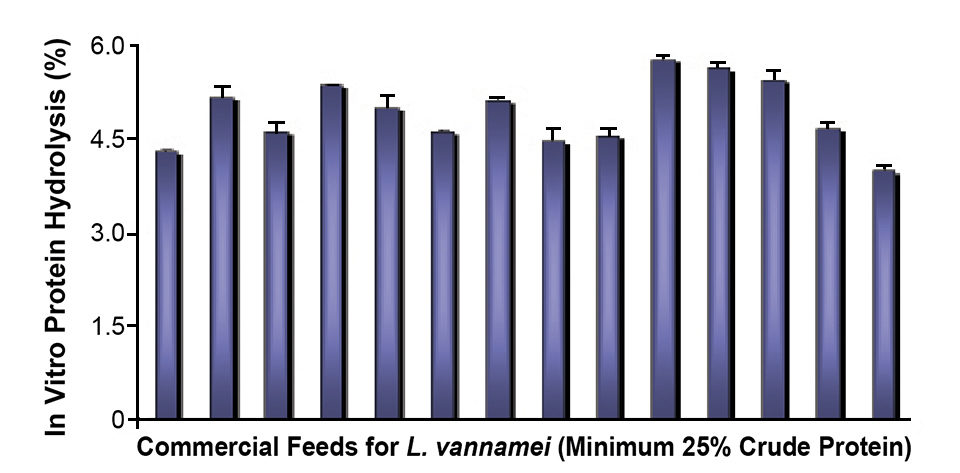
Shrimp performance trial
It is accepted that increased dietary protein digestibility may not necessarily lead to higher growth through tissue accumulation. On the other hand, the digestive capacity of hepatopancreas enzymes upon protein in commercial feeds has been correlated with such key performance features of farmed shrimp as growth and feed efficiency.
In a recent clearwater trial by the authors, juvenile 3-g L. vannamei were reared at 114 shrimp per m2 in 500-l tanks at 29.5 degrees C., and fed six commercial feeds using feeding trays. After 56 days, yield, growth rates (0.56-0.98 grams per week) and feed conversion were significantly correlated with in vitro DH percent with shrimp enzyme extracts.
In contrast, feed protein composition (amino acid profile, true protein, nonprotein nitrogen) and pepsin digestibility showed little or no prediction of shrimp performance. Moreover, feeds ranked by compositional features varied noticeably in relation to the parameter considered, indicating the features may be not sufficient for complete evaluation of protein quality.
Effective protein enzymatic breakage correlated with higher shrimp growth and culture performance may encourage increased application of the DH percent concept as a nutritional criterion. Assessment of protein quality in ingredients and feeds may include digestive capacity combined with compositional features to examine feed potential in terms of nutrient presence and availability.
(Editor’s Note: This article was originally published in the November/December 2007 print edition of the Global Aquaculture Advocate.)
Now that you've reached the end of the article ...
… please consider supporting GSA’s mission to advance responsible seafood practices through education, advocacy and third-party assurances. The Advocate aims to document the evolution of responsible seafood practices and share the expansive knowledge of our vast network of contributors.
By becoming a Global Seafood Alliance member, you’re ensuring that all of the pre-competitive work we do through member benefits, resources and events can continue. Individual membership costs just $50 a year.
Not a GSA member? Join us.
Authors
-
Daniel Lemos, Ph.D.
Marine Aquaculture Laboratory
Oceanographic Institute
University of Sao Paulo
Praça do Oceanográfico 191
Sao Paulo 05508-900 Brazil -
Alberto J.P. Nunes, Ph.D.
Instituto de Ciências do Mar
LABOMAR/UFC
Fortaleza, Ceará, Brazil
Related Posts

Aquafeeds
A look at protease enzymes in crustacean nutrition
Food digestion involves digestive enzymes to break down polymeric macromolecules and facilitate nutrient absorption. Enzyme supplementation in aquafeeds is a major alternative to improve feed quality and nutrient digestibility, gut health, compensate digestive enzymes when needed, and may also improve immune responses.
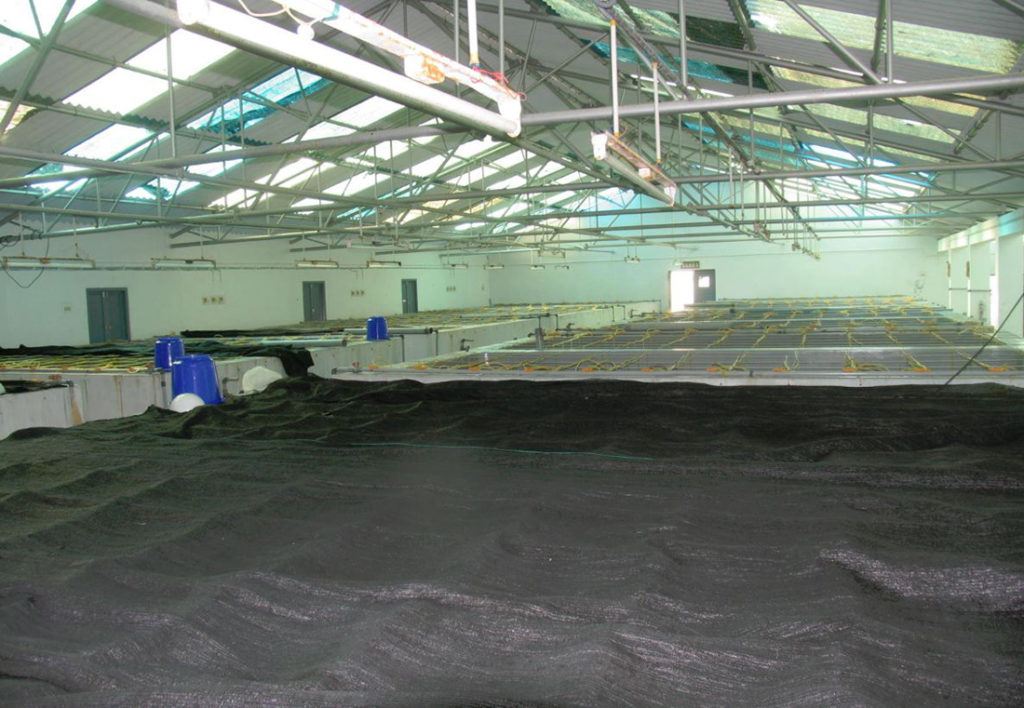
Health & Welfare
A study of Zoea-2 Syndrome in hatcheries in India, part 3
In this third and final part, authors present recommendations to help reduce the incidence of Zoea-2 Syndrome, which is not caused by any known infectious agents in P. vannamei hatcheries in India.
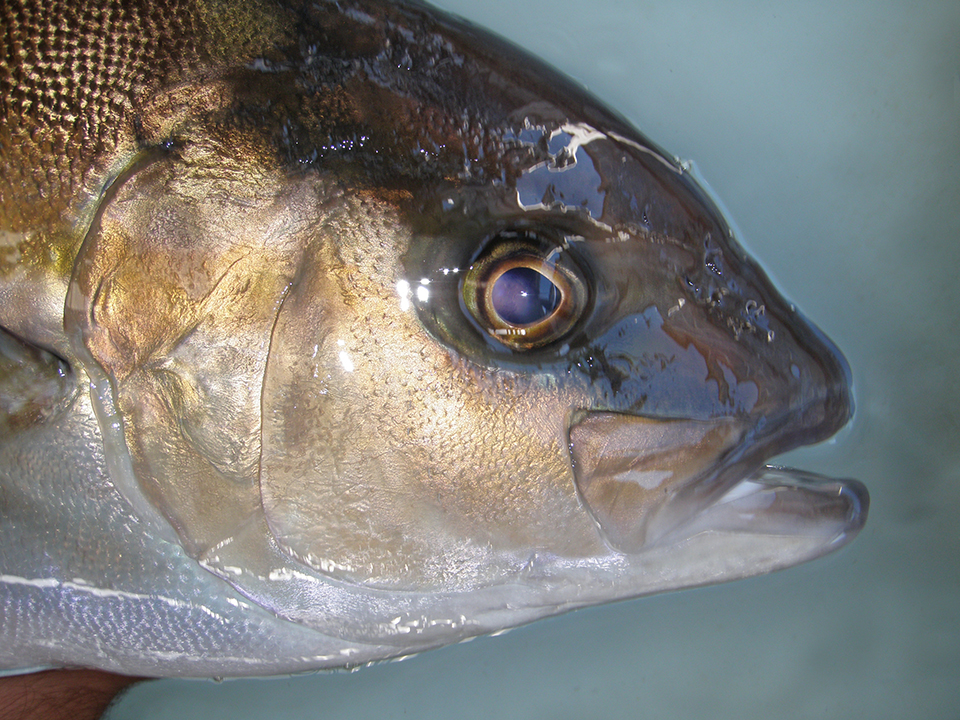
Health & Welfare
Advances in yellowtail larval rearing
The University of the Canary Islands in Spain is researching yellowtail broodstock management and larval rearing to promote aquaculture diversification in Europe.

Innovation & Investment
Artemia, the ‘magic powder’ fueling a multi-billion-dollar industry
Artemia, microscopic brine shrimp used as feed in hatcheries, are the unsung heroes of aquaculture. Experts say artemia is still inspiring innovation more than 50 years after initial commercialization. These creatures are much more than Sea-Monkeys.


